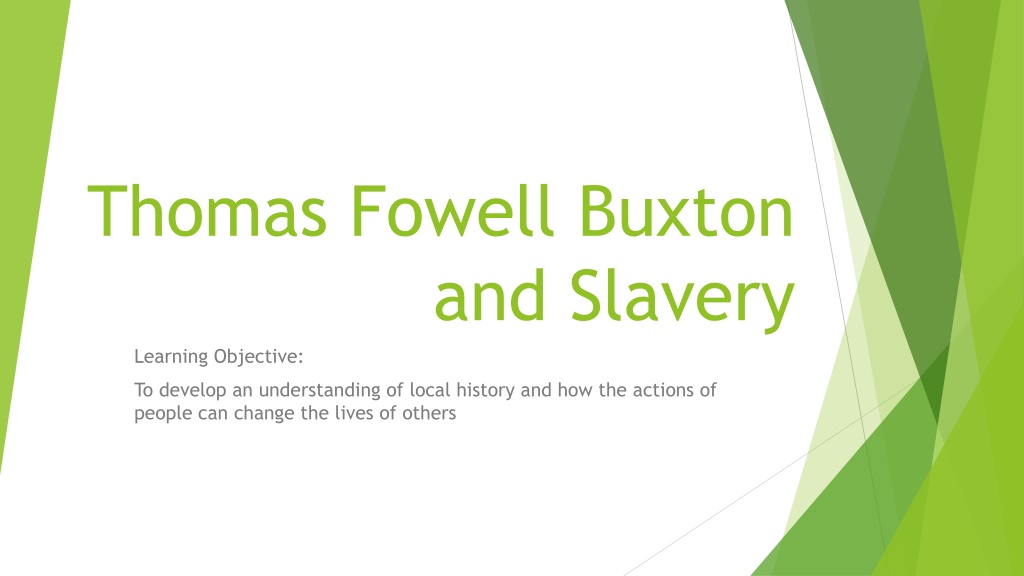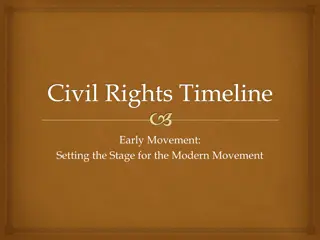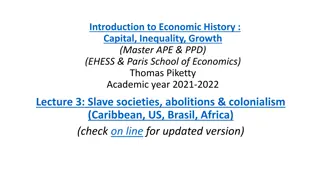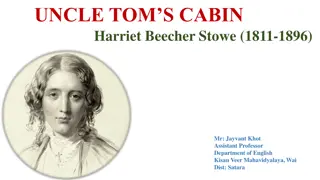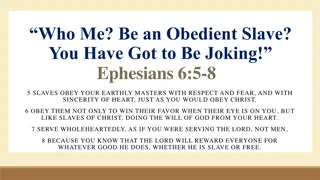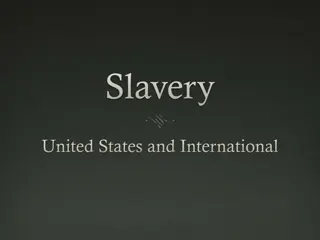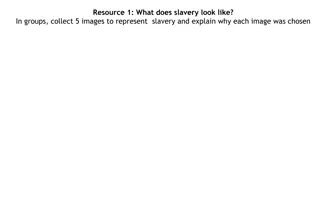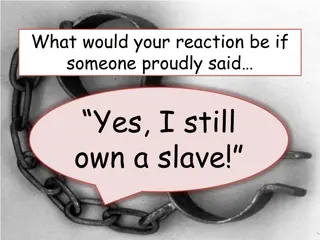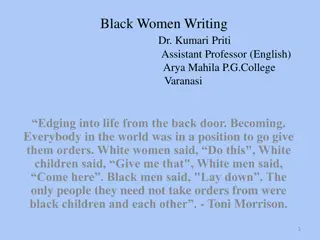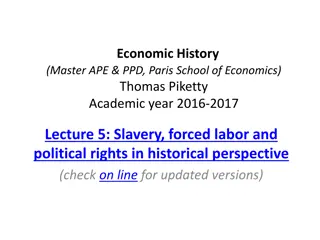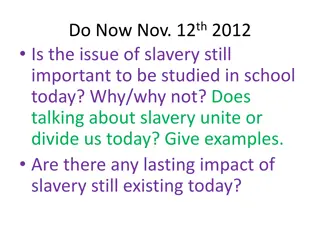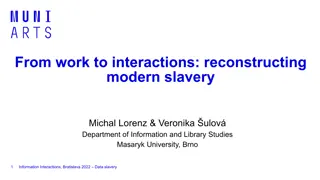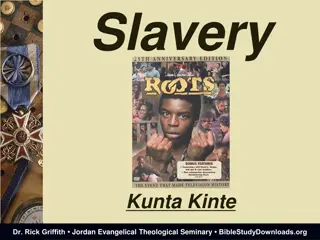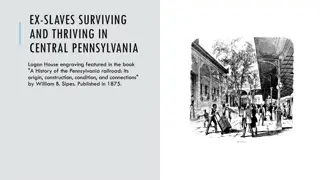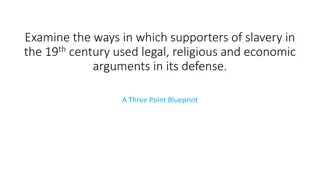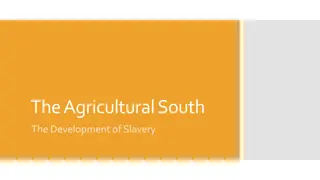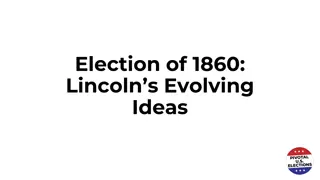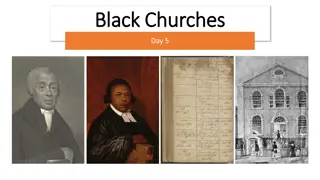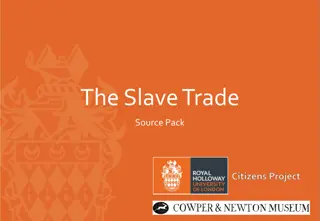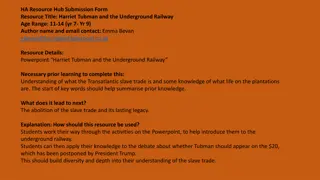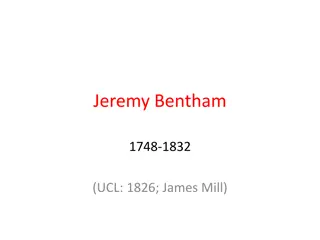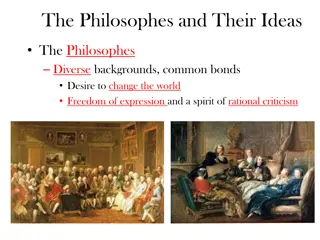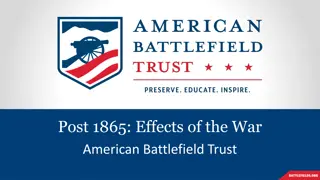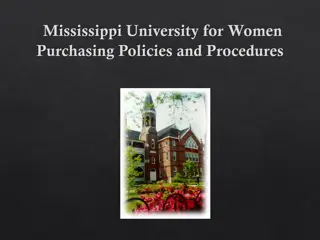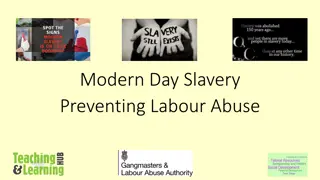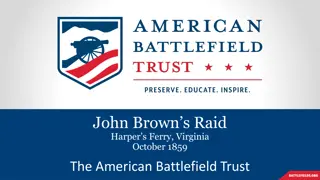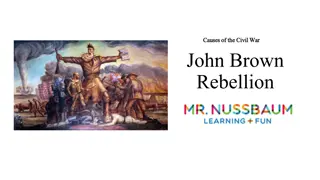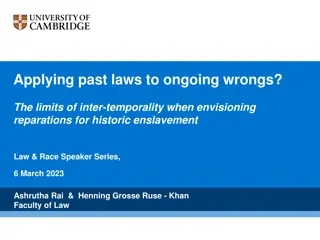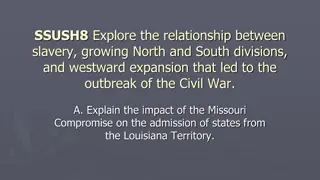Thomas Fowell Buxton: A Local Hero's Impact on the Abolition of Slavery
Discover the inspiring story of Thomas Fowell Buxton, a key figure in the abolition of slavery in the British Empire. Explore his life, achievements, and lasting legacy through monuments like Belfield House and the Buxton Monument on Bincleaves Green in Weymouth.
Download Presentation

Please find below an Image/Link to download the presentation.
The content on the website is provided AS IS for your information and personal use only. It may not be sold, licensed, or shared on other websites without obtaining consent from the author. Download presentation by click this link. If you encounter any issues during the download, it is possible that the publisher has removed the file from their server.
E N D
Presentation Transcript
Thomas Fowell Buxton and Slavery Learning Objective: To develop an understanding of local history and how the actions of people can change the lives of others
Think about the last lesson What should be done? Life for the slaves on the plantations of Jamaica and other areas was terrible. What do you think should be done to help them? Talk with your partner and share your ideas
Think about the word hero. What does this word mean to you? What does a hero do? What attributes do they have? Discuss with your partner
A person who is admired for their courage, outstanding achievements, or noble qualities Dictionary definition of the word hero Which of these people are heroes?
Thomas Fowell Buxton He was born in Essex on the 1st April 1786 After being elected as an Member of Parliament in 1818, he campaigned for the abolition of slavery in the British Empire. This took a long time but eventually, in 1833, this was achieved and, in 1834, the new law came into force. He died on 19th February 1845.
A local hero? Although Thomas Fowell Buxton was born in Essex, he acted as MP for Weymouth from 1819-1837. He owned a house in Wyke Regis called Belfield House which is still there today. He regularly visited Weymouth as he was growing up and on one occasion almost drowned in Weymouth Bay! In 2017, a monument was erected on Bincleaves Green in Weymouth to remember his achievements and, particularly his role in the abolition of slavery throughout the British Empire.
Belfield House in Wyke Regis and The Thomas Fowell Buxton Monument on Bincleaves Green.
Explaining the Buxton Monument Standing next to the Buxton Monument on Bincleaves Green you will find an Information Table It is there to explain what the various carvings on the Buxton Monument actually mean The carvings show Thomas Fowell Buxton himself, Belfield House, his family crest and why elephants have been used to illustrate his many achievements
Activities Write about your own hero. What do they do that makes them heroic? Design your own monument, either for Thomas Fowell Buxton or for your own personal hero. Make sure you also include your detailed carvings which should represent something about your hero. Use the fact sheet or the internet to find information about Thomas Fowell Buxton and create a biography about him.
